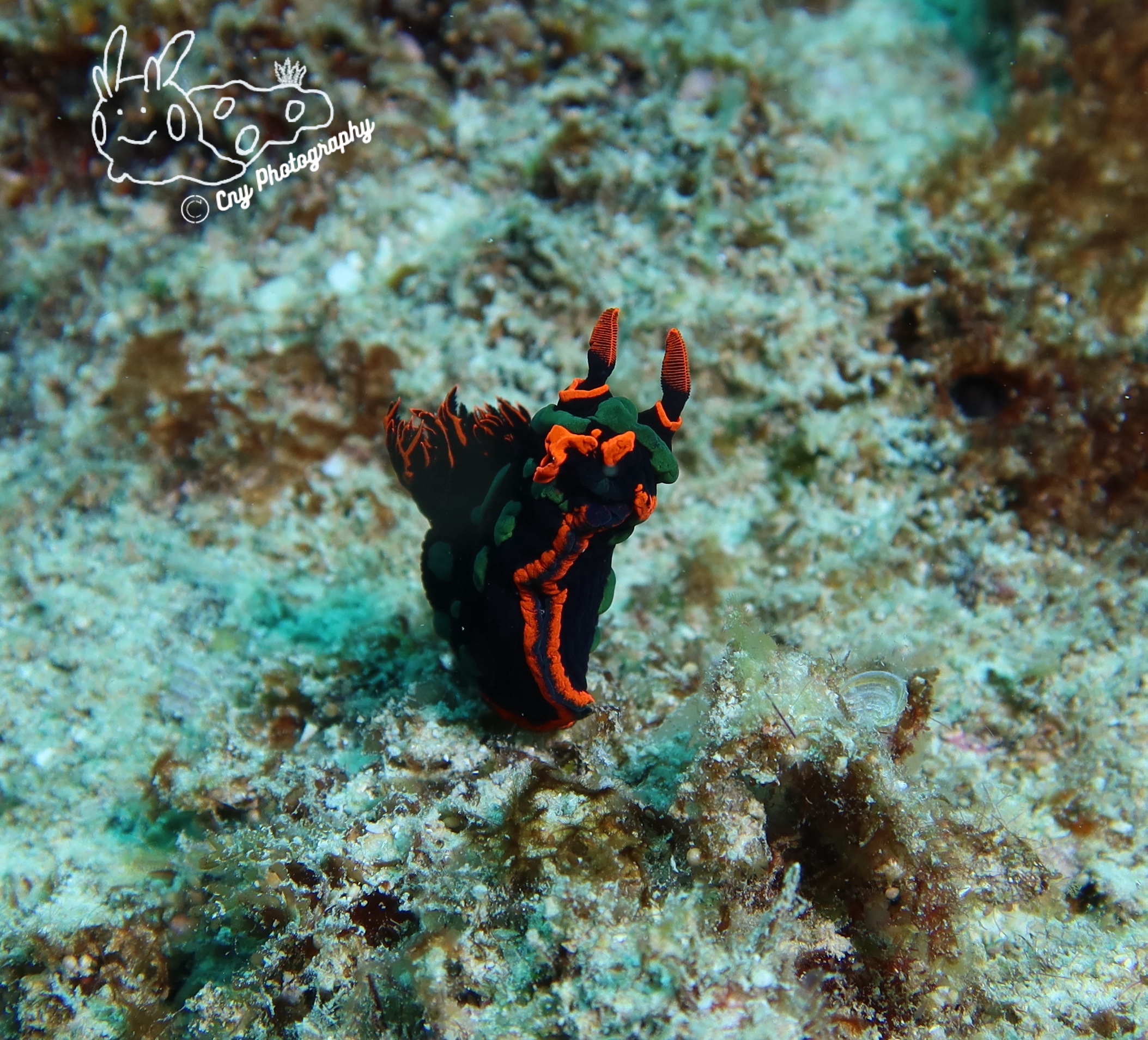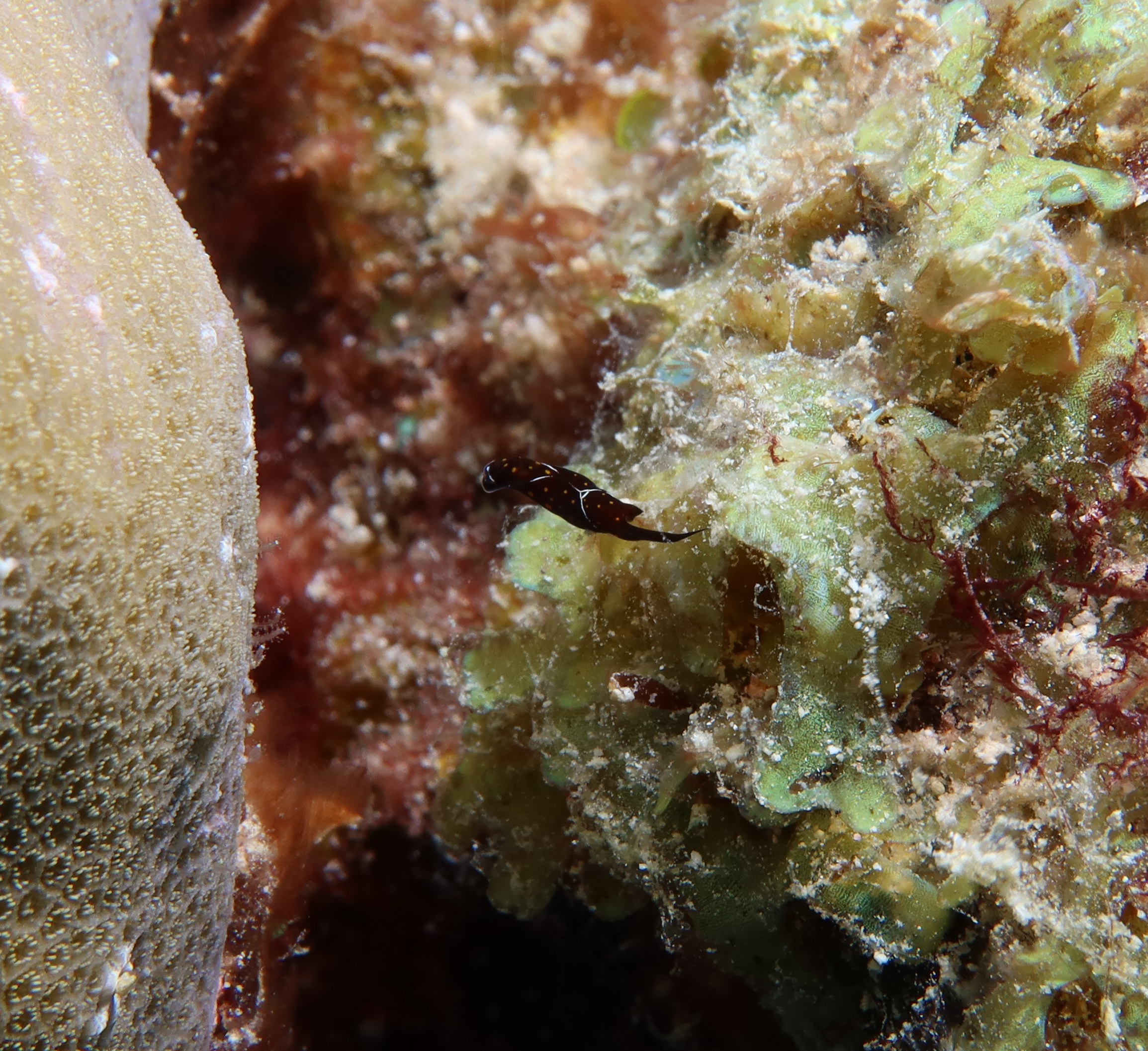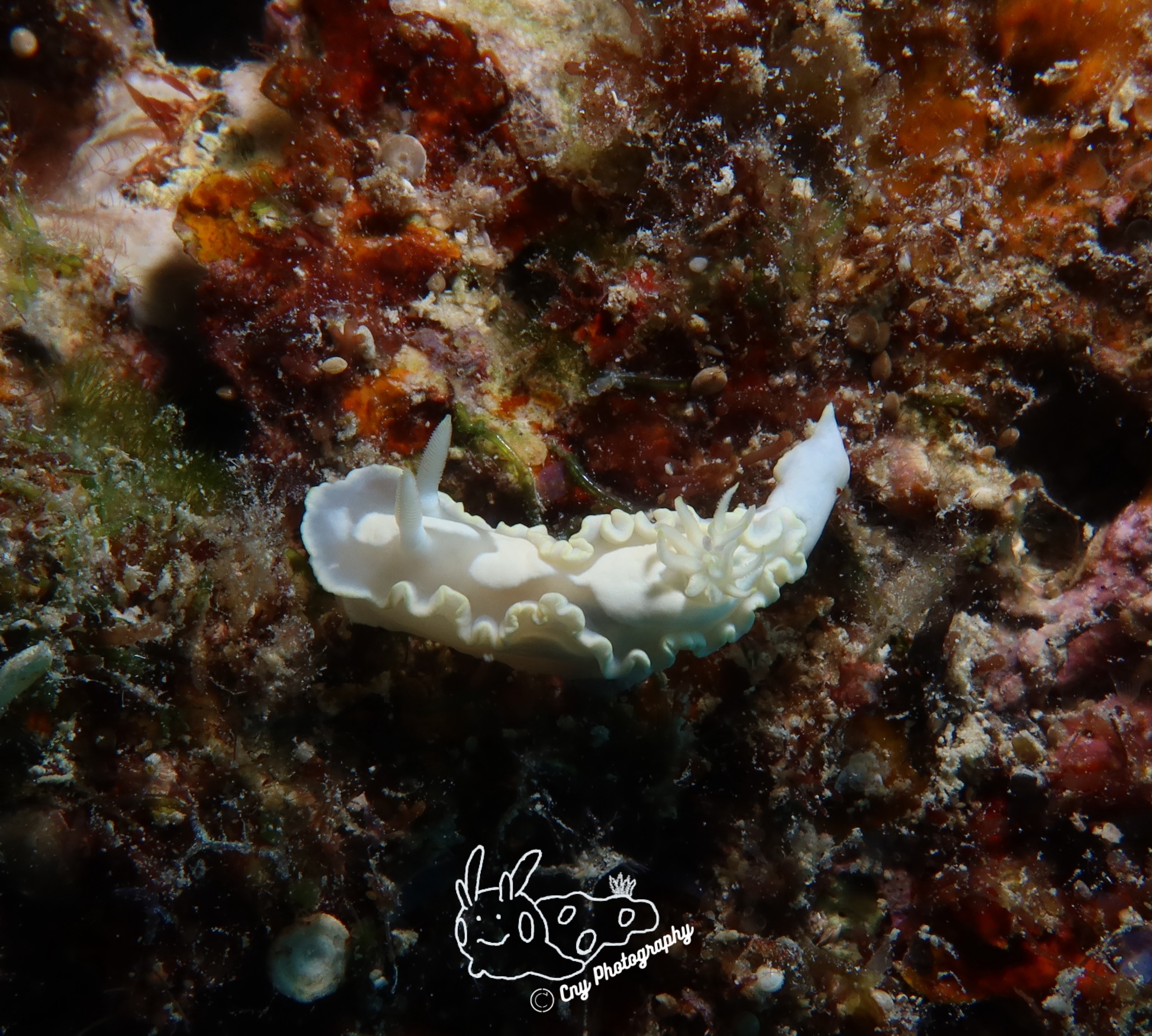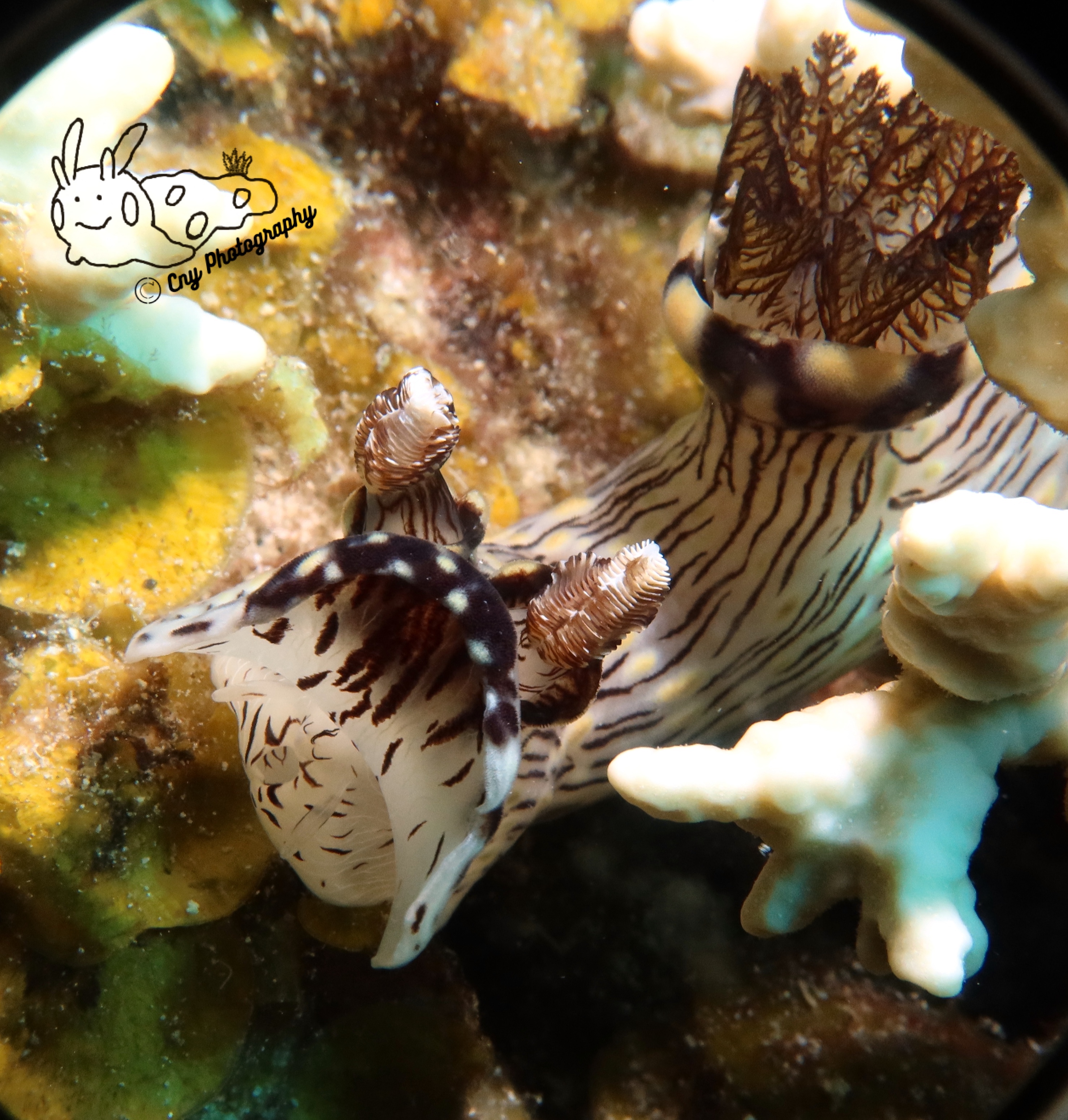Mauritius’ Most Iconic Nudibranchs
Mauritius is more than just turquoise lagoons and white-sand beaches — it's also home to an incredible diversity of nudibranchs, the flamboyant sea slugs that fascinate underwater photographers and marine life lovers alike.
In this article, we explore the most emblematic nudibranch species found around Mauritius — some easy to spot, others more secretive, and a few exclusive ones that have only recently made their debut on our reefs.
The Showstoppers
- Nembrotha kubaryana
Neon green and black with orange rhinophores, a spectacular sight on reef drop-offs.
Nembrotha kubaryana is one of the most visually striking nudibranchs, with its jet-black body, electric green lines, and vivid orange rhinophores. But beyond its looks, this species is also fascinating for its diet: it feeds on toxic tunicates and stores their chemicals, making itself unpalatable to predators. - Chelidonura punctata
Small, black with orange spots, quick-moving.
Chelidonura punctata may be small, but it’s impossible to miss thanks to its glossy black body speckled with orange dots. This fast-moving sea slug is a member of the headshield slug group, and it uses its flattened head to burrow slightly into the sand as it hunts tiny flatworms—its favorite meal. - Glossodoris pallida
Pale-colored with wavy edges, a classic reef nudibranch.
Glossodoris pallida lives up to its name with its delicate appearance and pale, almost translucent body, often trimmed with a fine white or cream margin. While it may seem simple at first glance, this species is part of a fascinating group of dorid nudibranchs that feed on sponges. After feeding, it stores chemical compounds from its prey in its tissues, which helps deter predators. - Jorunna rubescens
Fluffy, pink to reddish with caryophyllidia that give a velvety look.
Jorunna rubescens is one of the “fuzzy” nudibranchs — its body is covered in tiny spiky structures called caryophyllidia, giving it a velvety, almost furry appearance. Its coloration is helping it blend in with the sponges it often feeds on. Despite its plush look, it’s a true predator, equipped with a specialized radula to scrape off sponge tissue.
For Keen Eyes
- Favorinus cf. mirabilis
Tiny and elegant, feeds on other nudibranchs' eggs.
Favorinus cf. mirabilis is a tiny but remarkable nudibranch. What makes it truly special is its unusual diet: it feeds on the eggs of other sea slugs, including those much larger than itself! Its slender body and orange-ringed cerata give it an elegant appearance, but spotting it requires patience and a sharp eye.
- Doris (genus)
Simple-looking but ecologically important reef dwellers.
Doris sp.01 may not boast the vibrant colors of its flashier cousins, but its charm lies in its simplicity. Usually cream to pale yellow with a firm, rounded body, it blends easily with the reef or sandy substrate. Like other dorid nudibranchs, it feeds on sponges and plays a quiet but important role in the reef ecosystem. - Oxynoe viridis
A sacoglossan sea slug that performs kleptoplasty.
Oxynoe viridis is not a "real" nudibranch but a sacoglossan sea slug, often found grazing on green algae in shallow lagoons and seagrass beds. Its translucent green body helps it blend in perfectly with its surroundings — but its most fascinating trait is kleptoplasty: it steals chloroplasts from the algae it eats and uses them to photosynthesize, just like a plant! With its chubby body, tiny eyes, and occasional bubbles of air helping it float, it's both scientifically fascinating and irresistibly cute.













